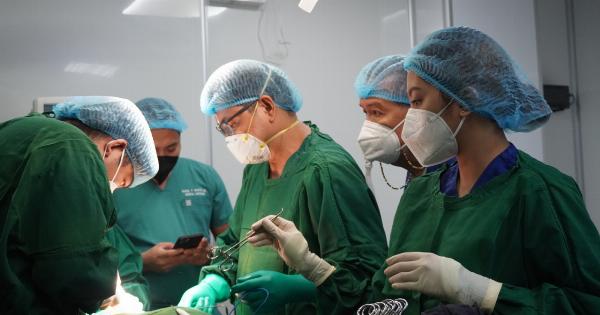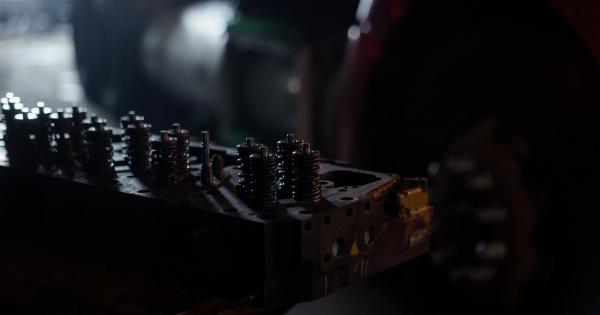Heart surgery is a highly specialized medical field that deals with the diagnosis and treatment of heart diseases.
Historically, heart surgery involved an invasive procedure called open-heart surgery, which required a large incision in the chest and the removal of the breastbone to access the heart. However, advancements in medical technology have led to the development of less invasive surgical techniques, including endoscopic techniques.
Endoscopic techniques involve the use of small, flexible tubes with a light and camera at the end, called endoscopes, to visualize and access the interior of the body.
Endoscopic procedures can be performed through small incisions, resulting in less pain, smaller scars, and a faster recovery time for patients. Endoscopic techniques are becoming increasingly common in heart surgery and are expected to play a significant role in shaping the future of the field.
Advantages of Endoscopic Techniques
Endoscopic techniques offer numerous advantages over traditional open-heart surgery. Some of the benefits of endoscopic techniques include:.
1. Less Invasive
Endoscopic techniques are less invasive than traditional open-heart surgery. The use of small incisions minimizes the amount of trauma to the body, reducing the risk of complications, and accelerating the healing process.
2. Reduced Pain
Because endoscopic techniques involve smaller incisions and less trauma to the body, patients typically experience less pain than they would with traditional open-heart surgery.
3. Smaller Scars
Because endoscopic techniques use smaller incisions, the resulting scars are smaller and less noticeable than those from open-heart surgery.
4. Faster Recovery Time
Endoscopic techniques typically result in a faster recovery time than traditional open-heart surgery. Patients generally require less time in the hospital and can return to their normal activities sooner.
Endoscopic Techniques in Heart Surgery
Endoscopic techniques are being used in various heart surgeries, including:.
1. Mitral Valve Repair
The mitral valve controls blood flow between the left atrium and left ventricle of the heart. A malfunctioning mitral valve can cause blood to flow backward, causing symptoms such as shortness of breath and heart palpitations.
Mitral valve repair is a common heart surgery that involves repairing or replacing the valve to improve blood flow.
Endoscopic techniques are increasingly being used for mitral valve repair.
Instead of using open-heart surgery, surgeons can perform the procedure through small incisions in the chest, resulting in less pain, smaller scars, and a faster recovery time for patients.
2. Coronary Artery Bypass Grafting
Coronary artery bypass grafting is a surgical procedure that involves bypassing a blocked or narrowed artery in the heart with a healthy blood vessel. This improves blood flow and reduces the risk of heart attack.
Endoscopic techniques are being developed for coronary artery bypass grafting. The procedure involves using small incisions and endoscopic instruments to bypass the blocked artery.
This results in less pain, smaller scars, and a faster recovery time for patients.
3. Atrial Fibrillation Surgery
Atrial fibrillation is a heart condition that causes irregular heartbeats, which can lead to blood clots, stroke, and heart failure. Atrial fibrillation surgery involves correcting the heart’s rhythm to prevent these complications.
Endoscopic techniques are being used more frequently for atrial fibrillation surgery. The procedure involves using endoscopic instruments to access the heart and correct the rhythm.
This results in less pain, smaller scars, and a faster recovery time for patients.
Challenges of Endoscopic Techniques in Heart Surgery
Although endoscopic techniques offer numerous advantages over traditional open-heart surgery, there are also some challenges associated with their use in heart surgery.
1. Learning Curve
Endoscopic techniques require specialized training and a significant learning curve for surgeons.
The use of endoscopic instruments and visualizing the interior of the body through a camera presents unique challenges that must be mastered before the surgery can be performed safely and effectively.
2. Limited Visibility
Endoscopic techniques rely on visualizing the interior of the body through a camera. However, the camera’s view may be limited, and surgeons may have difficulty seeing certain areas of the heart.
This can make it more challenging to perform surgery accurately and safely.
3. Equipment Costs
Endoscopic instruments and equipment can be expensive, making the procedure more costly for patients and healthcare providers. The cost of the equipment may also limit the availability of endoscopic techniques in some healthcare settings.
The Future of Endoscopic Techniques in Heart Surgery
Despite the challenges associated with endoscopic techniques in heart surgery, the future of the field appears to be headed in this direction.
As technology continues to improve, endoscopic instruments will become more advanced, and training programs will continue to evolve to better prepare surgeons for these procedures.
Advancements in 3D imaging and augmented reality technology are also helping to overcome the limited visibility associated with endoscopic techniques.
These technologies can provide surgeons with a more comprehensive view of the heart’s anatomy, allowing them to perform surgery more accurately and safely.
As healthcare costs continue to rise, endoscopic techniques may also become more cost-effective than traditional open-heart surgery.
This could make the procedures more accessible to a broader range of patients and healthcare providers, leading to increased use and further technological advancements.
Conclusion
Endoscopic techniques are revolutionizing the field of heart surgery, providing patients with less invasive procedures, reduced pain, smaller scars, and a faster recovery time.
As technology continues to improve, endoscopic techniques will become even more advanced, and the field will continue to evolve. Despite the challenges associated with their use in heart surgery, endoscopic techniques appear to be the future of this field, and their importance will only continue to grow.





























